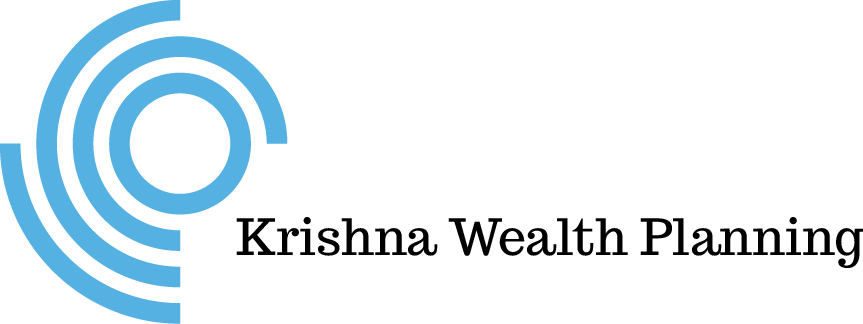8-Minute Read
I occasionally get questions from clients about a product called Indexed Universal Life Insurance (IUL). For over the past decade, the IUL has been among the most profitable and popular types of policies sold by insurance companies.
If you’re not careful with an IUL, you can end up with neither the most competitive insurance coverage nor the most competitive investment vehicle.
IUL is a type of permanent life insurance. That means if you pay the required premiums, your policy will stay active regardless of age. When you die, there will be a benefit paid to your heirs or estate. In practice, I find that most families get sufficient protection through an alternative called term life insurance.
Yet there are cases where permanent insurance makes sense. A few areas where they can be very useful include estate tax planning, pension maximization, and business succession.
Companies and agents that sell IULs often claim you can also benefit from two other benefits that we will explore in this piece:
- An IUL Help You Generate Tax-Free Retirement Income
- An IUL Gives you Equity-like Returns but without the Downside
While these claims contain partial truth, they can also obscure important points and downplay alternative paths that may be simpler and more cost effective.
Claim #1 – An IUL Help You Generate Tax-Free Retirement Income
This is a claim touted for most types of permanent life insurance, so this is not necessarily IUL specific. While the claim is technically true, it can be misleading. To understand why, we need to look at the three components of this income: policy loans, cash value withdrawals and death benefits.
Should Policy Loans be Called Income?
Let’s start with the most common way it’s suggested you access cash from your policy. That is by taking a tax-free policy loan.
Loans from a life insurance policy are tax-free, but so are proceeds from any type of loan! When you get a mortgage or car loan, you’re not taxed upon receiving the benefit.
Of course, we could look at debt examples closer in structure to a life insurance loan. Proceeds from a Home Equity Line of Credit (HELOC) or a Securities Based Line of Credit (SBLOC) are tax-free. These loans are secured by the collateral in your home equity or investment account, respectively. Conversely, life insurance loans are secured by the cash value of your policy.
Some agents claim you will never have to pay back the loans you take from an insurance policy. That’s possible, but you should set the right expectations. If you die with a loan balance outstanding, your heirs will get a death benefit that is reduced by the loan amount. You didn’t pay back the loan, but your estate was reduced by it.
What about while you’re alive? Depending on how much you borrow from the policy, you might have to pay it back if the loan balance (with accruing interest) approaches the cash value (collateral). At that point, your policy could be at risk of lapsing, and you may be required to put money into your policy to keep it in force.
By the way, if your policy ever does lapse, that can create a large and possibly unexpected tax bill. That can negate some of the “tax-free” benefits you’ve received until then.
All this begs the question of whether you should consider loan proceeds to be called income in the first place. Any money you receive can be a form of income. But we may not all be comfortable calling a loan income if there’s a tangible risk you will need to pay it back.
Cash Value Withdrawals
The other way it’s claimed you can receive tax-free income is by withdrawing from your cash value. But how impressive is that?
First understand that cash value can accumulate over time if the premiums you pay exceed the costs of keeping your policy in force. It’s not unusual for those costs to be a significant portion of your premiums. Costs go towards sales, administration, investment management and to the actual insurance protection.
From a tax perspective, when you withdraw from your cash value, what you invested comes out first before any gains. Put another way, your withdrawals are tax-free up to your basis. The basis is the money you paid into the policy over the years. If the cash value grows beyond your basis, which can take many years for that to happen, then accessing that portion will be taxable.
When you receive tax-free money by withdrawing from your cash value, you’re basically getting back a portion of past premiums you paid.
Alternatively, money you invest in your own (non-retirement) investment account has a basis too. You’re not taxed on accessing that either. The difference is if you sell your own investments at a gain, you’ll have to pay some capital gains tax now.
This difference in tax treatment between insurance and non-insurance investing can be meaningful under the right circumstances and given a long-time horizon. But there’s enough uncertainty here for the benefits to be easily overblown.
There is another way to build up tax-free assets. Here I mean in a total tax-free manner…both your contributions and growth. That is done though Roth-style assets, typically in the form of Roth IRAs or Roth 401ks.
Tax-Free Death Benefits are Not Unique
Most life insurance contracts benefit from one more form of special tax treatment. That is death benefits are provided to your heirs free of income tax. There are some rare exceptions if a policy is sold to an unrelated party.
In fact, most other types of insurance policies (e.g., disability, long-term care) are set up this way. If you pay premiums with “after-tax” dollars, the future benefit if needed will be received tax-free.
The question is whether an IUL is an efficient way to produce tax-free death benefits. In some cases, they might be. But it’s important to consider the alternatives.
Term life insurance does not typically accumulate cash value benefits and the coverage expires after a certain number of years. But you get a much higher death benefit relative to the premiums you pay.
Term insurance may be appropriate if your true need for life insurance diminishes as you age. With proper planning, that is often achievable. It’s a combination of asset growth and declining debt that allows this to happen.
It’s also important to remember that the IUL is just one form of permanent insurance. If you’re speaking to a life insurance agent, ask about their alternatives. Common ones include whole life insurance and survivorship life insurance.
Claim #2 – An IUL Gives you Equity-like Returns but without the Downside
I try to be a flexible and open-minded person. But there are a few areas of personal finance where I become skeptical. One is when I hear claims of an investment opportunity with terrific upside with NO downside risk.
The more any strategy is willing to bear some downside risk, I open my mind considerably to its upside potential. There are no ironclad laws of physics that apply to the world of finance, but one of the closest ones is that risk and return are closely related.
Insurance products should naturally protect against downside risk. But if you hear about an IUL with no downside and an equity-like upside, it’s a half-truth at best. To understand why, it helps to look at a few things: IUL Crediting, Dividends, and Illustrations.
How IUL Crediting Works
With an IUL, you are not directly participating in the stock market. Understand that the insurance company is managing an options strategy to determine how much to credit your cash value.
The formulas are based on different market indices though. A common example is the S&P 500 index. They are usually structured in a way where if the market index you’re tracking goes down, nothing is credited to your cash value. But your cash value does not get reduced either.
One exception is the policy’s costs. If costs are not offset by premium payments, it can erode cash value. If we put policy costs aside, I’m willing to concede that some downside protection is possible with an IUL.
The often-misleading part of the claim is that you get to participate in the upside should the index you’re tracking rise in value. Here’s where you need to look closely at the contract’s language, which is not an easy task.
Look for things like participation rates and cap rates. These can severely limit what gets credited to your cash value. Also check that these rates won’t change over time. They may be set favorably in the early years of your policy, but if the insurance company can change them in the future, your investment experience can change dramatically.
Don’t Overlook the Missing Dividends
The other key missing piece is dividends. When you own a stock outright, dividends often make up a meaningful portion of its return. Over time if dividends can be reinvested, you have an opportunity for a compounding effect.
IUL contracts don’t count dividends. This shouldn’t be a surprise as you’re not owning stocks outright. In an IUL, they are only looking at the value of one or more indices. Furthermore, indices tend to drop in value when dividends are paid out. If the insurance company is using the reduced index value to determine your cash value crediting, it can be another eroding effect.
Between crediting method limitations and missing dividends, it becomes difficult (if not impossible) to get equity-like returns in an IUL.
Perhaps the right question is should you expect to get equity-like or fixed income-like returns? I argue you’re more likely to get the latter, as I described (with some more technical detail) in an earlier piece about a similar product in the annuity space called Equity Indexed Annuities.
Scrutinize the Illustrations
You can see how the insurance company is projecting your policy will perform through what’s called an in-force illustration. Request these illustrations both before you buy a policy and periodically afterwards if you do buy the policy.
These illustrations should show how the insurance company is projecting the policy will perform. These are called non-guaranteed projections. They also should show guaranteed projections which are more conservative but can help you set downside expectations.
With IUL illustrations, additional scrutiny is deserved. Beyond the crediting method mentioned earlier, the illustrations might show a “bonus interest” crediting. Confirm if these bonuses are guaranteed, have they been historically paid out, etc.
Insurance regulators created standards a while back in efforts to prevent misleading illustrations. But insurance companies were creative. Their actuaries and marketing departments found ways to work around those standards. It created a sort of gamesmanship between companies over the years. Sadly, this was to the consumer’s detriment.
Just this year, a revised standard was released, called AG49-B. The impact of this could be dramatic for some insurance companies. Illustrated income reductions could be as large as 50%. Time will tell whether all this works out to the consumer’s benefit.
The point here is that illustrations are an important aspect of evaluating any permanent life policy. But take extra care if you’re looking at an IUL policy.
Do Your Due Diligence
In this piece, we unpacked two of the common claims used by IUL salespeople. I’m not saying that an IUL a categorically bad or that deceptive sales practices are rampant. The reality is more nuanced. Many of these products are out there, and some are bound to be doing a good job.
IULs are complex contracts, and we only scratched the surface in this blog. If you’re considering one, look at all the contractual provisions and policy riders. Ask tons of questions. Make sure the product is easy for you to understand and that you’re aware of the alternatives.
Parting thought: If any investment or insurance product is being sold to you, scrutinize it before buying. Work with your financial planner to determine if the product is appropriate for your situation and goals.
If you have comments or questions on this piece, please drop me a line at: [email protected]
References
- https://krishnawealth.com/the-value-of-having-debt-capacity/
- https://www.kitces.com/blog/life-insurance-loan-taxation-rules-at-death-or-lapse/
- https://krishnawealth.com/look-beyond-the-allure-before-using-equity-indexed-annuities/
- https://www.figmarketing.com/blog/ag-49-b-life-insurance-illustrations-what-you-need-to-know/
The information on this site is provided “AS IS” and without warranties of any kind either express or implied. To the fullest extent permissible pursuant to applicable laws, Krishna Wealth Planning LLC (referred to as “KWP”) disclaims all warranties, express or implied, including, but not limited to, implied warranties of merchantability, non-infringement, and suitability for a particular purpose.
KWP does not warrant that the information will be free from error. None of the information provided on this website is intended as investment, tax, accounting or legal advice, as an offer or solicitation of an offer to buy or sell, or as an endorsement of any company, security, fund, or other securities or non-securities offering. The information should not be relied upon for purposes of transacting securities or other investments. Your use of the information is at your sole risk. Under no circumstances shall KWP be liable for any direct, indirect, special or consequential damages that result from the use of, or the inability to use, the materials in this site, even if KWP or a KWP authorized representative has been advised of the possibility of such damages.
In no event shall KWP have any liability to you for damages, losses, and causes of action for accessing this site. Information on this website should not be considered a solicitation to buy, an offer to sell, or a recommendation of any security in any jurisdiction where such offer, solicitation, or recommendation would be unlawful or unauthorized.





